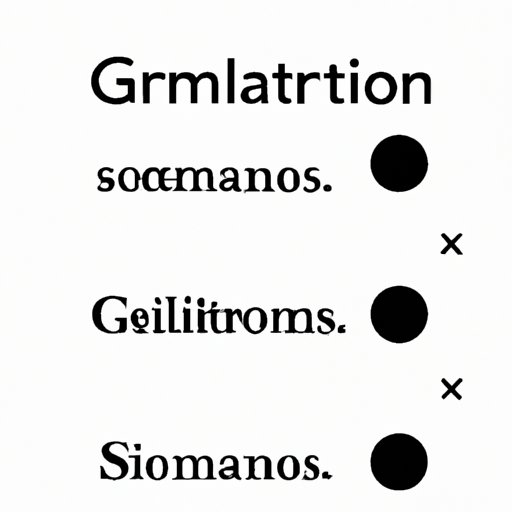Introduction
Semicolons are a common rule of grammar that many of us struggle to master. A semicolon is often used to connect two independent clauses or to separate items in a list, but it can be tricky to determine when to use this punctuation mark correctly. The importance of mastering the use of semicolons cannot be overstated, as they can improve the clarity and concision of your writing. In this article, we’ll explore the art of semicolons and provide you with tips and tricks to help you use them correctly in your writing.
The Art of Semicolons: How to Use Them Correctly in a Sentence
Before discussing the correct usage of semicolons, it’s important to understand what they are. A semicolon is a punctuation mark that separates two independent clauses while indicating a closer relationship between the clauses than a period would indicate.
The primary purpose of a semicolon is to connect two independent clauses that are closely related in meaning and could stand alone as sentences. By using a semicolon, writers can avoid the need to create two separate, shorter sentences or connect the clauses with a conjunction.
One of the most common mistakes that writers make with semicolons is using them incorrectly. For example, using a semicolon to connect a dependent and independent clause is not grammatically correct.
To use semicolons correctly, it’s essential to understand an independent clause, which is a complete sentence that can stand alone. A dependent clause, on the other hand, is an incomplete sentence or phrase that cannot stand alone as a sentence.
Here are a few tips and tricks to help you use semicolons effectively in your writing:
- Use semicolons between items in a list when the items contain internal commas.
- Avoid using semicolons with coordinating conjunctions.
- Don’t overuse semicolons; they are more effective when used sparingly.
Mastering the Semicolon: Examples of Correct Usage to Improve Your Writing Skills
One practical way to master the use of semicolons is to analyze examples of sentences in which they are used correctly. This will allow you to understand the proper usage and you’ll grasp how they work in context.
Here are some examples of sentences that use semicolons correctly:
- I have a big presentation tomorrow; I need to prepare tonight.
- She spent all day shopping; the result was a pile of shopping bags in the corner.
- I am allergic to peanuts; I always carry an EpiPen with me.
Studying correct examples is essential for improving your writing skills and enhancing your understanding of how to effectively use semicolons.
Semantics of Semicolons: A Detailed Guide on Where and How to Put the Punctuation Mark
The placement of a semicolon in a sentence depends on its purpose. Here are some common scenarios where you would use a semicolon:
- Connecting two independent clauses: Use a semicolon to connect two independent clauses that are closely related.
- Separating items in a list: Use a semicolon to separate items in a list when each item contains commas.
- Connecting two independent clauses that use commas: Use a semicolon before a conjunction (such as “and,” “but,” and “or”) to connect two closely related independent clauses that already contain commas.
It’s important to note that semicolons are not interchangeable with other punctuation marks, such as commas, periods, or colons.
Semicolon Usage in Modern Writing: An Analysis of Correct Implementation
Correct usage of semicolons can vary depending on the style of writing. Here are some ways to incorporate semicolons effectively in modern writing:
- Academic Writing: Professional writers, academics, and researchers use them to create complex sentences that support advanced analysis.
- Creative Writing: Authors use semicolons to create longer, more elegant sentences that create impact and add depth to the narrative.
Incorporating semicolons successfully into your writing can help elevate the style of your writing, making it appear more advanced, professional, and impactful.
Writing Through Semicolons: A Beginner’s Guide to the Correct and Elegant Use of the Punctuation Mark
Here are some tips for using semicolons in your writing:
- Use semicolons to create variation in sentence structure and length.
- Use semicolons to join independent clauses together when one sentence logically follows the other.
- Avoid using semicolons when a colon, period, or comma would be more appropriate.
Incorporating semicolons into your writing style can elevate your writing style to create a more elegant and authoritative tone while also promoting clarity in your writing. Remember to use them sparingly but in the right context, and they can have a big impact on your writing style.
Conclusion
Mastery over semicolons is an important aspect of writing, which helps you to clearly connect and express ideas. By understanding the proper usage of semicolons, you’ll have the ability to structure your writing in a more elegant and effective style, while enhancing the overall clarity of your writing. With practice and a deep understanding of the proper usage of semicolons, you’ll quickly master their use and take your writing to the next level.
